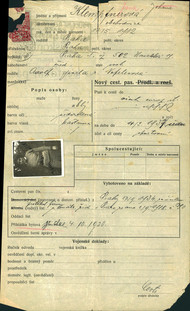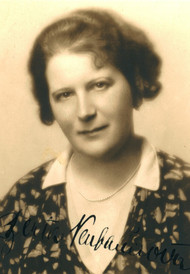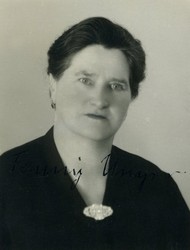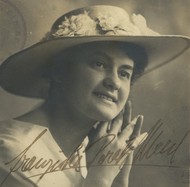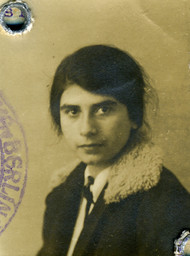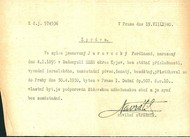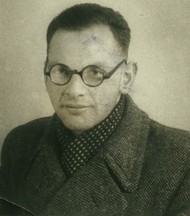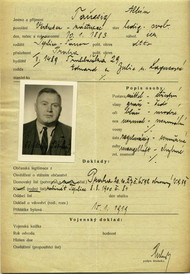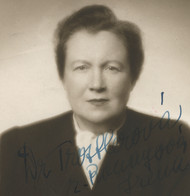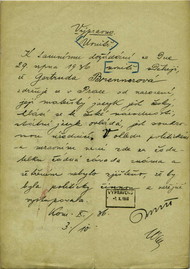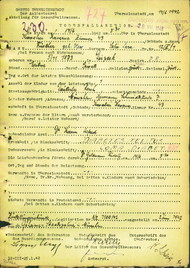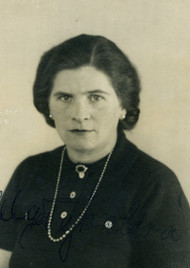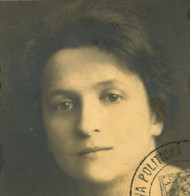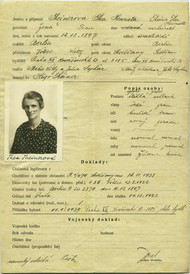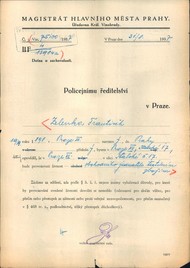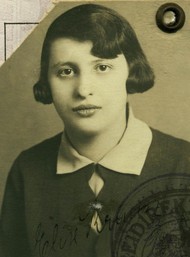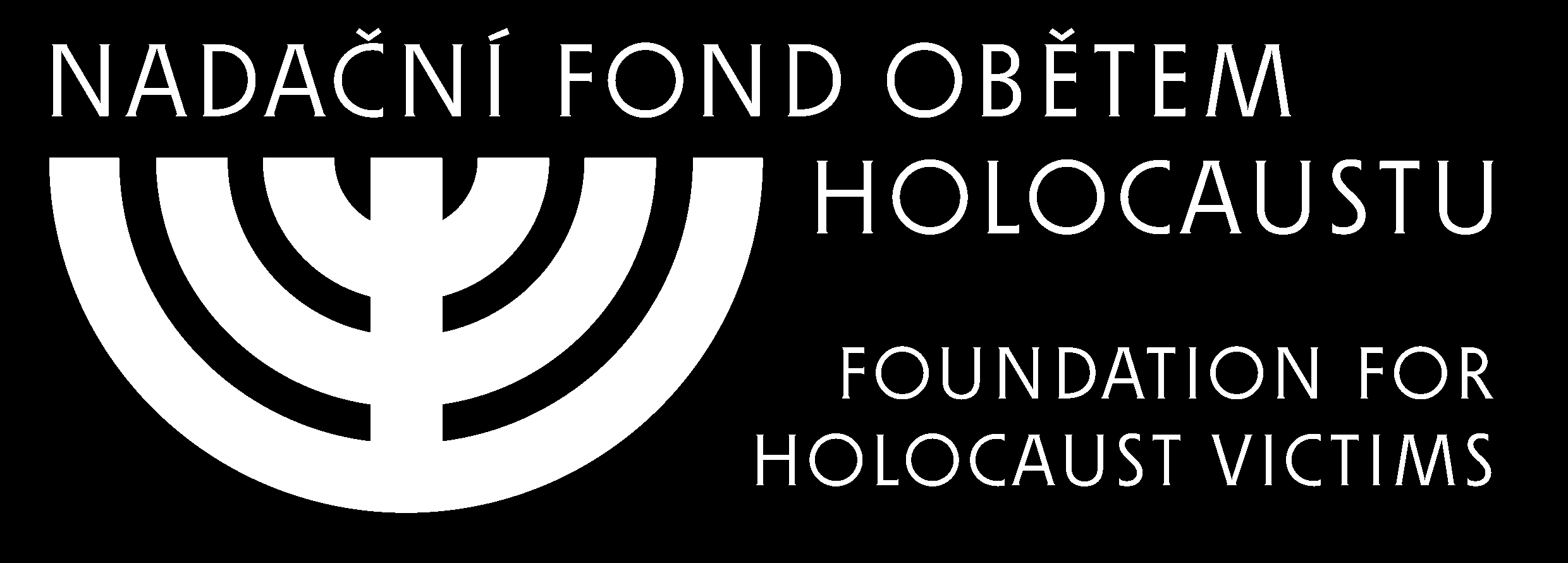Auschwitz and Auschwitz-Birkenau
The Auschwitz camp complex was built gradually, starting in spring 1941, and consisted of three parts. The first part, known as Auschwitz I, was established in the spring of 1940 as a concentration camp modeled on the long-established Dachau, Sachsenhausen, Buchenwald, Flossenbürg, Mauthausen and Ravensbrück concentration camps. By mid-1942, most of the prisoners were politically active people from Poland and those whom the Nazis thought could be dangerous to their plans to Germanize Poland, such as teachers, scientists, priests.1
On the grounds of the former Polish village of Brzezinka, about 2 km from the Auschwitz I concentration camp, the first expansion
of the camp was begun in the autumn of 1941. This new camp called “Auschwitz-Birkenau” was originally intended to keep a pool
of forced laborers for the implementation of the Nazi`s plans for settlement by the German population in the area. As forced
laborers, Himmler wanted to abuse Soviet prisoners of war, which he assumed would be captured in great numbers. First it was
thought of 50,000 prisoners, then 150,000, and finally even 200,000. In February 1942, Himmler changed his plan and instead
of Soviet prisoners of war he started to plan with Jewish prisoners.2
The third part of the complex, Auschwitz-Monowitz, was created in collaboration with the Nazis and IG Farben, the first private company to use the Nazis' offer to “hire” prisoners on a large scale. A buna, or synthetic rubber, factory was to be built. While IG Farben was responsible for accommodation, supplies and food in this camp, SS-members took care of supervising the prisoners. IG Farben's example was followed by other companies, creating smaller side camps, a total of more than thirty around the IG Farben factory. By the end of 1942, all three camps formed a joint administrative unit, then the complex was divided into three administrative parts with their own commanders. In 1944, Auschwitz III became an independent concentration camp, which administratively included all its branches.3
The Auschwitz-Birkenau camp was deliberately built by the Nazis in swampy and wet terrain, which practically never dried up, so it was the cause of constant wet fumes. In addition, the local climate was characterized by significant temperature fluctuations during the day and sharp differences during the year. There was severe heat in summer, unbearable cold in winter and thick fog or storms in spring and autumn.4
The camp area measured in total 750 x 1800m. Two roads leading from the east to the west divided the camp into three unequally large construction sections (Bauabschnitt, abbreviated B) called B-I, B-II and B-III. The individual construction sections were themselves divided into smaller sections denoted by lowercase letters. Each section had a special function that changed several times during the existence of the camp. In 1944, the following designation applied: women's quarantine camp (B-I-a), women's labor camp (B-I-b), men's quarantine camp (B-II-a), Terezín family camp (B-II-b), Hungarian women's camp (B-II-c), men's camp (B-II-d), “Gypsy family camp” (B-II-e), men's hospital camp (B-II-f) and the unfinished and undivided section B-III called Mexico. In one part of this section, the camp leadership placed Hungarian women.5
![[NECAS_Romove_na_Morave_2005_strana_288-289.png]](https://c.holocaust.cz/images/NECAS_Romove_na_Morave_2005_strana_288-289.png)
Detailed map of the “gypsy camp” in section B-II-e in concentration camp Auschwitz-Birkenau. (Nečas, Ctibor: Romové na Moravě
a ve Slezsku (1740‒1945). Brno 2005).
tábor B I b – camp B I b
silnice ke krematoriím II. a III. - road to crematoria II and III
Rampa, místo k selekcím – ramp, place of selections
tábor B II d – camp B II d
tábor B II f – camp B II f
silnice mezi bloky – road between barracks
silnice ke krematoriím IV. a V. - road to crematoria IV and V
Nedokončená část úseku B III (Mexico) - unfinished camp section B III (Mexico)
B I b – womens` labor camp
B II d – men`s camp
B II e – gypsy camp
B II f – men`s sick camp
B III – unfinished camp section (“Mexico”)
K – kitchen
S – „sauna“ – cleaning and disinfection facilities
U – bathroom
VT – block leaders` (“Blockführer”) office
Z – toilets
1 – food storage
2 – offices for employment, camp clerks` office
3 – clothing storage
4-21, 23, 25, 27 – barracks
24, 26, 28, 30 – inmate infirmary
29, 31 – “kindergarten”, barracks for small children, later orphanage
32 – “laboratory” of the camp doctor Mengele
The camp as a whole included common facilities that were placed next to the described sections: in the west, there was a cleaning and disinfection station, and section B-II-g, where the personal belongings of the prisoners were stored with a warehouse of prison uppers and objects. In the east was the main entrance gate located, as well as waterworks, SS-barracks, including a hospital and the SS-headquarters.
Each of the sections at Auschwitz-Birkenau was fenced with barbed wire to a height of 2.5m. At night, this fence was charged with high-voltage electric current. Sometimes, desperate prisoners committed suicide by jumping into it. A fence of the same kind surrounded the camp area as a whole, together with wooden towers with SS-guards permanently on watch. The distance between the towers was 50m.
The inhuman regime in the Auschwitz camp complex was led by a camp commander who also commanded the SS-men in the camp. In each individual camp, its own camp commander (Lagerführer) occupied the highest place, having unlimited power over the life and death of prisoners and deciding especially on the punishments imposed in the camp. In the "gypsy camp", SS officers B. Pfütze, G. A. M. Palitzsch, F. Harder, H. B. Buch, G. Bonigut and finally W. R. Sawatzki held this position. They were subordinated to the report commander (Rapportführer), the camp doctor (Lagerarzt) and the block leader (Blockführer), who were responsible for announcing and conducting daily appeals. At the lowest level were the guards (Posten), with whom the imprisoned people were in direct contact during their imprisonment, including also special events, such as selection, or incoming or outgoing deportations, etc.6
Auschwitz-Birkenau was the largest Nazi extermination camp. From 1942, the Nazis gradually built a complex of gas chambers and crematoria there, which made mass murders on great scale possible. Two gas chambers called bunkers, were constructed in two former farm buildings of the village of Brzezinka. Bunker I with a capacity of 800 people was put into operation in March, 1942, bunker II, with a capacity of 1200 people, in June 1942. The crematoria II and III, operated since March and June 1943 each had one gas chamber with a capacity of 2,000 to 3,000 people in the basement. The crematoria on the ground floor each had 15 furnaces and could burn about 1,440 bodies a day. Since the Nazis wanted their mass murders by Cyclone B to be a quiet process, the gas chambers were disguised as showers. Both large crematoria were blown up by the Nazis on January 20, 1945, trying to hide evidence of their crimes. The smaller crematoria KIV (in operation since March 1943) and KV (since April 1943) had three gas chambers of different sizes (for 1,500, 800 and 150 people) on the ground floor. These crematoria had eight furnaces, each furnace could burn about 770 bodies a day. KIV burned down during the uprising of the Jews from the so-called “Sonderkommando” (special command), who were forced to work in KIV, on October 7, 1944. KV was destroyed by the Nazis themselves on January 26, 1945, the day before the liberation of the camp.7
Establishment and appearance of the “gypsy camp” at Auschwitz-Birkenau
The “gypsy camp” (Zigeunerlager), also referred to as the “gypsy family camp” (Zigeunerfamilienlager), in section B-II-e of the Auschwitz-Birkenau concentration camp, was established after the Auschwitz-decree and its implementing directives had been issued respectively on 16 December 16, 1942, and on January 29, 1943, ordering the concentration of “gypsy half-breeds, gypsies-Roma and non-German members of gypsy tribes of Balkan origin” from the Reich and the occupied territories.8
The “gypsy camp”, built on an area of 150 x 750m, was adjacent to the men's hospital camp (sections B-II-f) and the men's camp (sections B-II-d). South of it was the ramp, where the selection of Jews after arrival of the deportation trains in the camp took place since spring 1944. A path called the camp road (Lagerstrasse) passed through the center of the camp, wooden barracks or “blocks”, numbered 1 to 33, were built on both sides of this path. The barracks, just like those in the other sections of Auschwitz-Birkenau, were originally constructed as army horse stables, made of wood and about 40 m long, 9 m wide and about 2.5 m high. Light streamed in through two rows of windows in the raised roof. There was a gate on both short sides, next to the gate opening to the Lagerstrasse, there were two small rooms. In one of these rooms, the block leader slept, the other functioned as a serving counter where the inmates of one barrack were handed out their daily bread rations. Next to the gate at the opposite side of the barrack stood containers for feces. Inside the blocks stood three-story bunk beds, two beds on each story.
Blocks No. 5 to 27 and 4 to 20 were used to accommodate prisoners, a smaller amount of barracks was used for operational and administrative tasks (food storage, camp canteen, office rooms, clothing storage, offices of the camp`s Gestapo, the so-called kindergarten, hospital). Behind the entrance gate were two kitchens: one cooked for adults from the very beginning, the other was put into operation only later as a children's kitchen. There were also two toilets, two washrooms and a so-called sauna, which served as a steam bath for short baths of new prisoners or lice control.
The area in front of the blocks was used for roll calls (called “Appell” in German), during which the prisoners were counted
to make sure nobody was missing. A strip of stomped clay stretched between and behind the individual blocks was used by the
imprisoned people to meet and communicate during their free time.9
Next chapter: Inmates


